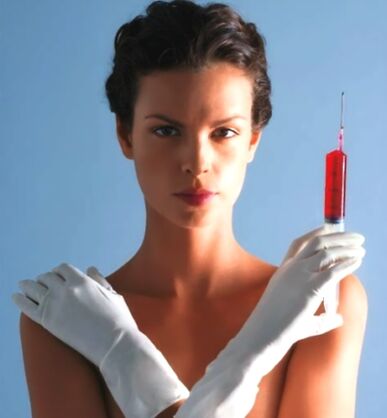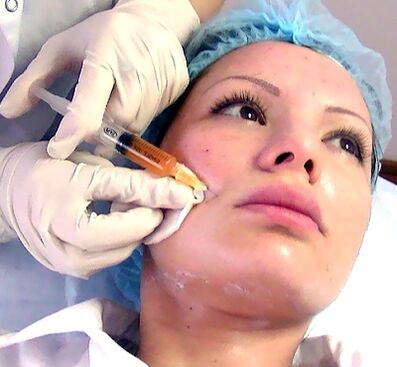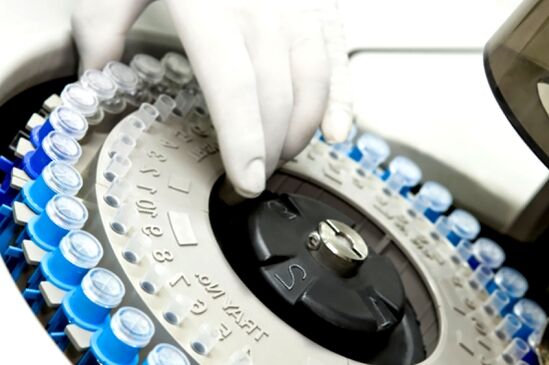It is now fashionable to dress well, young and beautiful. But youth is a fading phenomenon, and since we want to maintain it for as long as possible, beauticians offer us this opportunity by developing, demonstrating and applying the latest and most effective techniques, rejuvenation procedures. But what should a person who wants to live longer, rejuvenate, and look better should choose from among the many modern cosmetic procedures? This article details the essence of one of the latest technologies, plasma boosting, and discusses how safe and efficient the technology is.
What is Plasma Lift

Human blood contains great potential to stimulate all the resources of the body, so it is necessary in combating the aging process and age-related changes, rejuvenating the skin and repairing tissue in general. The Plasma Lift procedure facilitates the efficient disclosure of the performance of all these potentials. What is a plasma lift, what is it based on, and how does this cosmetic procedure work to effectively rejuvenate the skin and subcutaneous tissue?
Plasmolifting is a cosmetic procedure, a non-surgical technique that regenerates the skin, activating the body tissue regeneration process. This is the latest way to revolutionize beauty. The basic principles and ideas of the technology, like all ingenious things, are very simple. The main concept of this cosmetic procedure is based on the restorative power of platelet-rich plasma from human patients. The resulting plasma is injected into the problem areas of the skin. Thanks to this injection, the body gains a powerful drive to activate the natural rejuvenation and regeneration process.
This stimulating property of platelet-rich plasma ensures the formation of skin cells from stem cells, normalization of metabolic processes, formation of hyaluronic acid molecules, stimulation of blood circulation and increased production of elastin and collagen. The skin and deeper subcutaneous tissue begin to rejuvenate.
There are many other synonyms for this cosmetic procedure, for example, ACR - autologous cell regeneration, autogenous skin regeneration, autologous skin treatment, skin plasma regeneration, plasma bioregeneration, blood regeneration, plasma bioregeneration, "blood-sucking therapy".
The plasma lift procedure is partly similar to biological mesotherapy in that it uses the patient's biological material for injection, thereby ensuring the fullest compatibility of the biological components and eliminating the possibility of complications in the form of allergic reactions.
Plasmolifting is similar to a cosmetic procedure developed by Swiss experts called ReGen Lab, which also rejuvenates the skin and subcutaneous tissue. But this is a more expensive process and requires expensive hardware.
The History of Plasma Boosting
Early predecessors to this method include autohemotherapy (infusion of a patient's blood from a vein into the muscles of the buttocks to stimulate the body's protective functions), which has been used in medicine for over a hundred years, and plasma therapy, aA method of treating certain diseases by injecting blood plasma into a vein.
The first experiments aimed at rejuvenating human skin were carried out in the United States decades ago, before the advent of plasma lifting methods. As a result of these studies, a cosmetic procedure called PRP therapy (PRP-Plateled Rich Plasma - Platelet Rich Plasma) has emerged. Plasma lift is considered an improvement on PRP therapy; it was patented by experts in 2004.
Influence Mechanism
Platelets, in addition to their main function of accelerating blood clotting, are also able to secrete growth factor proteins that stimulate the process of cell division and growth. After an injury, platelets typically build up near the wound, starting the process of stopping the bleeding and restoring the damaged area.
To force the cells to artificially renew themselves, thereby rejuvenating the skin, small injuries should be done, for example, during chemical peels, or by tricking the patient's body by delivering platelets to the desired area. Such action will act as a signal to start the regeneration process.
Therefore, when platelet-rich plasma is injected into the correct area, it helps restore skin cells. Fibroblasts (connective tissue cells) begin to efficiently produce elastin, collagen and hyaluronic acid, the formation of new skin cells is also accelerated, and the skin regenerates.
Plasma boost range
Plasma lifting procedures are mostly common in the cosmetic field. Efficient, fast and painless skin rejuvenation is her strength. But this cosmetic procedure is also successfully used in trichology and is an effective way to combat hair loss and hair loss. After a few plasma boosts, the hair structure is restored, their loss stops and the process of healthy hair growth begins. For the treatment of hair loss and baldness, 2 to 10 plasma lift procedures may be required, depending on the general condition of the hair.
Plasma lift surgery is successfully used in dentistry to speed up the implant placement process and the treatment of periodontitis.
Indications for Plasma Lift

The implementation of the plasma filling procedure has the following indications:
- peeling and dry skin;
- Prevent the appearance of stretch marks and sharp weight loss;
- 25+ years old. Mimic small wrinkles - 35+;
- Violation of the essential properties of the skin due to weight loss;
- The main signs of skin prolapse, its hardness, elasticity decreases;
- Acceleration of the skin tissue regeneration process after laser and chemical peels;
- acne and other skin diseases;
- Age-related elastic tissue, "grey" skin;
- restores the skin after intense exposure to UV rays (tanning, sunbathing);
- thin, dull hair;
- baldness and dandruff;
- Correct the adverse effects of Botox injections.
Contraindications to Plasma Lift
Plasma lifting procedures have the following contraindications to their implementation:
- insanity;
- severe sagging of the skin;
- blood disease;
- immune disorders;
- chronic disease;
- Exacerbation of various chronic diseases;
- severe forms of diabetes;
- Diseases of various internal organs of the patient;
- Allergy to anticoagulants used to make injections;
- menstruation;
- tumor disease;
- hypofibrinogenemia;
- Platelet abnormalities and dysfunction, with low platelet counts (less than 100, 000 per 1 µl);
- low hemoglobin (less than 100 grams per 1 liter);
- fever, high temperature;
- pregnant;
- use of antibiotics;
- lactation;
- antiplatelet therapy;
- use of non-steroidal anti-inflammatory drugs (NSAIDs), such as aspirin, analgin, within two days before surgery;
- Inflammation of the skin in the injection area.
This cosmetic procedure imposes the following major restrictions on the patient before proceeding:
- Going to the solarium is prohibited;
- Natural tanning is prohibited;
- Visits to swimming pools and saunas are prohibited.
Plasma Lift Procedure: Execute

Before starting surgery, some tests are recommended: biochemical and clinical blood tests, blood tests for the presence of infectious diseases. Then, the patient's blood is drawn from a vein into a test tube, which contains a separation gel and an anticoagulant. The volume of blood drawn depends primarily on the individual and biological characteristics of the patient. Usually about 10-20 ml. Then, using a special centrifuge, the blood is divided into three parts:
- cellular components (white blood cells and red blood cells);
- Platelet-rich plasma (approximately 1 million per 1 µl);
- Low platelet content in plasma (less than 150, 000 per 1 µl).
Platelet-rich plasma is injected using microinjection into problem areas previously treated with an antiseptic solution. After introduction, fibroblasts are placed along Langer's line (a line of natural stretch associated with age). During the process of stimulating the formation of elastin and collagen, the skin becomes firmer. Microinjection techniques are often similar to mesotherapy.
If necessary, anesthesia can be applied using a special cream. At the end of the procedure, the area where the plasma lift procedure was carried out was treated again with an antiseptic. During the first 3 days after plasma lift surgery, patients typically experience redness and peeling of the skin, as well as slight darkening. Small wrinkles may appear on the surface of the skin. It usually goes away after three days.
The duration of this process is usually 40 to 50 minutes. The basic course of Plasma Boosting is 4 times at 1 frequency for 1 to 2 weeks. And in order to maintain and consolidate the effect obtained, it is necessary to perform about 2 courses of plasma lift every year.
To prevent unpleasant side effects, the authors of plasmolifting are prohibited from further modifying the method, for example, adding other components, vitamins, to the platelet-rich plasma.
Compared to other cosmetic procedures, the plasma rejuvenation procedure has the most important advantage - the process of stimulating the production of collagen over time, i. e. improving the general condition of the skin, rejuvenating the skin continuously for the following months, Up to one year included.
Plasma Booster: Efficiency
In 40% of cases, the effect was noticeable almost immediately after the plasma boost. In all other cases, the cosmetic procedure performed will not be visible immediately, results will appear after approximately 2 weeks. To achieve more visible and better results, experts recommend several procedures. Skin rejuvenation in the treated area will then be very noticeable. The results of the program can last up to two years.
The resulting effect can be compared to chemical peeling of the skin on the neck and face: it becomes younger and more elastic, its color is improved, and fine wrinkles are smoothed out. The most noticeable effect after surgery is the "porcelain skin" effect - the skin becomes very soft, supple and smooth, as if glowing from the inside out. Plasma lifting procedures are only effective at the first signs of age-related changes and skin aging. Only in this way, its application can effectively rejuvenate the skin. If the facial wrinkles are deep or the oval shape is not obvious, this cosmetic procedure will not produce good results.
Below are the average recommended durations of plasma lift sessions and the results obtained for the following most common skin concerns:
- Sagging skin. Results: Increased swelling and skin tone. 4-6 Procedure 1 time within 7 days.
- wrinkle. Results: Wrinkles were reduced in depth and number, slowing age-related changes. 4-6 procedures, 1 every 7 days.
- photoaging. Results: Eliminates or reduces hyperpigmentation, photoaging. 4-6 procedures, 1 every 7 days.
- tired skin. Results: Reduced under-eye circles, swelling, improved skin tone, topically boosted skin immunity. 2-4 courses of treatment, once every 7 days.
- problem skin. Results: Reduced acne manifestations, improved skin condition, relief. 4-6 procedures, 1 every 7 days.
- Dry skin. Nutrition and hydration, activation of metabolic processes. 2-4 courses of treatment, once every 7 days.
- Hair loss, baldness. Result: Inhibits the process of hair follicle death and activates hair growth. 4-6 procedures, 1 every 7 days.
- Dry, thin hair. Result: Increases blood supply and nutrition to hair follicles and restores hair structure. 2-4 treatments every 7 days.
- Dandruff, oily scalp problems. Normalizes sebaceous gland function and eliminates dandruff. 4-6 Procedures 1 every 7 days.
Plasma Lifting Procedure: Safety
Plasmolifting is an absolutely safe cosmetic procedure that provides virtually painless skin regeneration without serious follow-up complications. Injection of platelet-rich plasma is not immunoreactive and non-toxic because, as mentioned above, this plasma is obtained from the patient's blood without the addition of additional substances and drugs. Since the plasma rejuvenation procedure helps activate the hidden resources of the body, this rejuvenation does not cause any rejection. Minor complications are possible, such as spots on the skin, redness, necrosis, hypopigmentation. Also, there is no recovery period for this cosmetic procedure. It is important to note that this complication is theoretically possible, but is extremely rare.
Combine with other programs
Plasma lift procedures are perfectly combined with other cosmetic anti-aging procedures, for example, all types of peeling and laser resurfacing. Skin rejuvenation will then manifest itself most effectively. In addition, this cosmetic procedure is ideal for preparing the skin prior to plastic surgery and improving its condition, its appearance during the post-operative recovery period. To achieve the maximum efficiency of the plasma boost method, it can be combined with other laser procedures:
- Hyaluronoplasty using a laser will prepare the skin for an increase in hyaluronic acid content;
- Laser photothermal decomposition allows you to consolidate the results obtained from plasma boosting;
- Combining lasers will enhance the resulting rejuvenation effect.
Plasma Lifting Procedure: Cost
The plasma lift procedure itself is low-cost because the patient himself is the supplier of platelet-rich plasma, the centrifuge performs the work of dividing the blood into fractions, and the resulting drug can be injected by an aesthetician trained in medium therapy. A major component of the price of a plasma lifter is intellectual property. But this cosmetic procedure is not that expensive.
The total cost is formed by considering the number and area of treatment areas.






































































